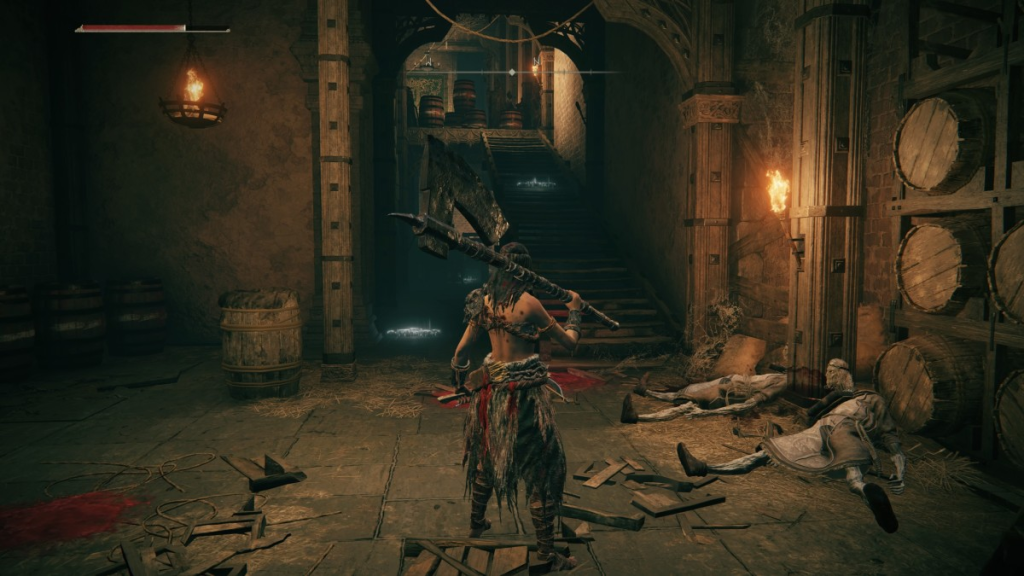As this is an action-adventure game, the way the enemies behave has a huge impact on the player’s experience. Outlining certain behaviours ensures the game’s feel and vision stays consistent throughout.
Basic Enemy Behaviours
In action games, there are various ways enemies can behave the influence how the player tackles certain situations, I will look into different examples in existing games to make in informed decision on how enemies will behave in my game:
Case Study: Elden Ring
Enemy behaviours actually differ in different areas within the game – I have noticed that the main reason for this difference is the size of the space in which the enemy is contained. For example, one of the first bosses the player encounters is the Tree Sentinel this enemy is at the centre of a large open grassland area and only attacks the player if they entice the enemy first. If they choose so, the player is completely allowed to avoid the boss and walk around them.


However, in Stormveil Castle, the encounters happen in much smaller rooms, ensuring that any enemies the player sees are also close enough to see them. This creates a forced confrontation that the player must experience in order to progress the game.
Bosses in Elden Ring
Most notorious for being difficult, these bosses are often the most memorable experiences in Elden Ring. I believe this is the case for a few reasons:
- Replayability – Bosses often have atleast two phases for the player to encounter, with the second being a much more difficult version, this prevents fights from being stale and repetitive
- Attack Patterns – Bosses will only have a few attacks that they cycle through, allowing the player to learn each one and adapt accordingly
- Reward – Defeating a boss in Elden Ring is extremely satisfying, as you can feel your own personal improvement
Case Study: Assassin’s Creed
Depending on the player’s play-style, they area able to systematically take down enemies without alerting the enemies surrounding them. The potential to do this increases player creativity in how they approach the game

How will this effect my game?
For basic enemies, their behaviour should depend on the environment around them. Allowing for fresh encounters for the player and allowing them to adapt and learn on their own. Furthermore, allowing for different solutions to situations provides the player with the freedom that I believe are what makes open-world exploration games so fun. Whether they sneakily dispatch a group of enemies on-by-one, or run into an all-out battle and defeat a group purely by swordplay should be their decision.
Bosses in my game will be difficult but predictable, the ability to learn from past mistakes in boss-fights provides a more skillful component to the fight. As opposed to attacking the boss non-stop and just hoping you are able to deal more damage than you take. Bosses should be a testament of skill and experience, not a dice-roll that you can attempt on repeat.